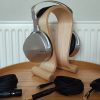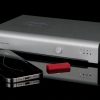From PC Annoyances, 2nd Edition by Steve Bass (O’Reilly Media).
The Annoyance:
Microsoft Office products have a love affair with the My Documents location. How can I make them store files where I want them stored?
The Fix:
There are a few ways to sidestep Microsoft’s obsession with tossing everything into My Documents.
- Windows Me lets you rename the folder, and Windows 2000 and XP let you choose another location where documents are saved when you choose My Documents:
- Close Microsoft Office and any other editing programs.
- Right-click My Documents (on the Windows desktop, in a Windows Explorer or folder window, or on the Start menu) and choose Properties.
- In Windows Me, highlight the name in the text box at the top of the General tab and rename the folder. In 2000 and XP, in the Target field, change the existing location (likely C:\Documents and Settings\username\My Documents) to wherever you want things saved. For working on this book, for example, I chose c:\annoyances\documents.
- Click OK. If you ever change your mind, you can restore the default by renaming the folder (Windows Me) or following the steps above and clicking the Restore Default button (Windows 2000 and XP).
- In Microsoft Office 2000 and XP applications, you can easily change the default folder for the Save and Open dialog boxes.
- In Word, select Tools ® Options, click on the File Locations tab, and adjust the locations as desired.
- In Excel and Access, select Tools ® Options, go to the General tab, and edit the “Default file location” field.
- In PowerPoint, select Tools ® Options, click on the Save tab, and edit the “Default file location” field.
- If you use Office 2000, there’s a Microsoft tool that lets you add custom places to Office dialog boxes, including Open and Save As. The tool lets you edit the five available locations in the left pane, and if you choose small icons, you can add up to 10 user-defined locations. The file you need is places.exe, and it’s available at
http://www.oreilly.com/pcannoyances. Note that when you download the file, you’ll discover that Microsoft includes a dumb self-extraction tool. What’s important is that you read the readme.doc carefully-it tells you exactly how to install the places utility.WINDOWS MOVING COMPANY
Windows will ask whether you want to move all the files in My Documents to your new location. Don’t rush this decision; for now, answer no. You can easily move the files later using Windows Explorer.
Figure 4-51
 This material has been adapted from PC Annoyances, 2nd Edition by Steve Bass, published by O’Reilly Media, Inc. Copyright O’Reilly Media, Inc., 2005. All rights reserved.
This material has been adapted from PC Annoyances, 2nd Edition by Steve Bass, published by O’Reilly Media, Inc. Copyright O’Reilly Media, Inc., 2005. All rights reserved.
This easy to read, accessible book from PC World expert Steve Bass covers the waterfront of PC gripes and gremlins, with fixes for everything from Windows glitches to browsers that won’t browse. Each fix is served up in bite-sized portions for quick reading–and even quicker fixing. A revised version of its best-selling predecessor, the 2nd edition offers 50 additional pages and over 120 new fixed annoyances.
PC Annoyances, 2nd Edition is available for purchase from Amazon.com, Amazon.co.uk, Amazon.ca and the sellers listed below.





























